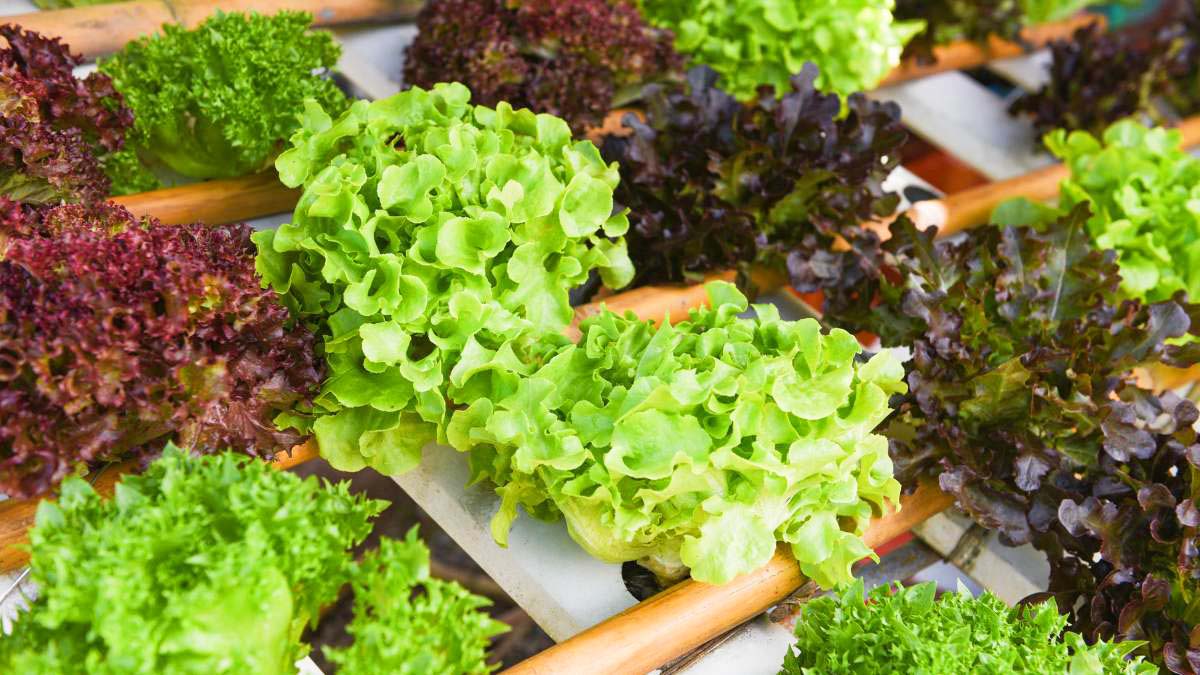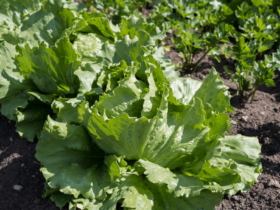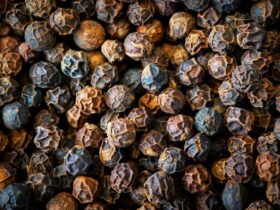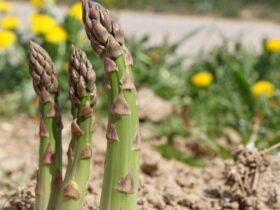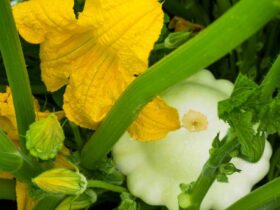Romaine Lettuce Growing Stages cycle from seed to harvest in 65 to 80 days. Its stages include germination, seedling, vegetative, bolting, and maturity.
Growing romaine lettuce can be a rewarding endeavor for both amateur and advanced gardeners. This leafy green has become increasingly popular due to its crispy texture and nutritional benefits. Whether you’re aiming to enhance your diet or brighten up your garden, understanding the growth stages of romaine lettuce is key.
Each phase has specific requirements regarding water, light, and nutrients. By recognizing these stages, gardeners can take the right actions to ensure a bountiful yield. From starting the tiny seeds to watching the leaves form into a full head, the process is straightforward but does require attentive care.
Seeds Of Start: Selecting The Best Varieties
Embarking on a gardening journey with romaine lettuce begins with a crucial step: choosing the right seeds. Selecting top-quality seeds is essential for yielding a bountiful harvest. Insight into seed selection sets the foundation for robust romaine lettuce plants that are both resilient and delicious.
Traits Of Top-quality Romaine Seeds
High-quality romaine seeds share several important characteristics. These traits ensure a higher germination rate and healthier plants:
- Purity: Seeds should be free from contaminants and non-lettuce seeds.
- Germination Rate: Look for seeds with a germination rate of at least 80%.
- Viability: Fresh seeds are more likely to sprout, leading to vigorous growth.
- Resistance: Opt for seeds resistant to common diseases and pests.
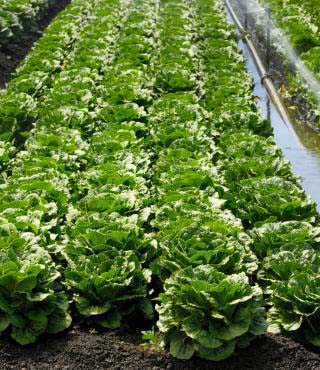
Heirloom Vs. Hybrid Varieties
Understanding the difference between heirloom and hybrid seeds is key:
| Type | Description | Pros | Cons |
| Heirloom | These seeds have been passed down for generations without modification. | Unique flavorsRich history | Less uniform growthVariable yields |
| Hybrid | Hybrids are the result of controlled pollination between different varieties. | Better disease resistanceMore consistent plants | Seeds may not be saved for next season |
Whether heirloom or hybrid, selecting the right type of seed hinges on your garden goals and personal preferences. Heirlooms lend themselves to a rich tapestry of tastes and tradition, while hybrids generally deliver consistent and resilient crops.
Germination: Sprouting The Perfect Beginnings
We start our journey with Romaine lettuce in a phase called Germination. This is the magic moment when seeds turn into tiny plants. It’s important to get this right. Perfect beginnings set the stage for healthy greens. Let’s explore how to sprout romaine lettuce seeds effectively.
Creating Optimal Conditions For Germination
Seeds need love and the right environment to grow. Think of it as their cozy bed. Ensuring that they have everything they need is critical. Good soil, the right amount of water, and love are their best friends. Here is how to make that perfect bed:
- Use a seed-starting mix: This mix is light and fluffy. It helps the baby roots push through easily.
- Moisten the soil: The soil should be damp but not soaked. Imagine a wrung-out sponge.
- Plant seeds shallowly: Tiny seeds like raw sunlight. Plant them about an eighth of an inch deep.
- Keep the soil moist: Seeds are thirsty. Give them a gentle spray when the topsoil dries.
Timing And Temperature For Sprouting Seeds
Seeds are like Goldilocks; they want everything just right. Knowing when and at what temperature to grow them is key. Look at this simple guide:
| Seed Stage | Timing | Temperature |
| Starting indoors | 6-8 weeks before the last frost | 65-75°F (18-24°C) |
| Transferring outdoors | After the last frost | Over 40°F (4°C) at night |
Remember to keep your seed trays in a warm spot. A little heat mat can make a big difference. Wait patiently, and soon tiny green sprouts will appear. You’re now on your way to growing crisp, refreshing romaine lettuce!

Seedling Care: Nurturing The Young Plants
After germination, romaine lettuce enters an exciting growth phase. Seedling care becomes crucial here. Meticulous attention helps these tiny plants mature into crisp, leafy greens. Let’s explore the right conditions to keep your romaine seedlings thriving.
Lighting Requirements For Romaine Seedlings
Proper lighting is vital for young romaine plants. It fuels their growth, ensuring they develop well. Here’s what you need to know:
- Consistent light: Aim for 14-16 hours of light daily.
- Intensity: Place seedlings close to a bright window or use grow lights.
- Distance: Keep lights about 2-3 inches above the plants to avoid legginess.
Watering And Nutrition Needs
Seedlings need regular watering and the right nutrients to grow. Balance is key:
| Aspect | Details |
| Watering | Keep soil moist but not soaked. Use a spray bottle for gentle watering. |
| Feeding | Start with a diluted, balanced liquid fertilizer after a few weeks. |
| Observation | Watch for signs of overwatering like wilting. Adjust as needed. |
Remember, consistent care during these early stages sets the foundation for a bountiful harvest of romaine lettuce.
Transplanting: From Tray To Garden
Moving your Romaine lettuce from tray to garden is a big step. It requires careful planning and execution. This part of your growing journey is about introducing your plants to their new home. Ensuring the process is smooth is crucial.
Hardening Off Seedlings Before Transplanting
Hardening off is the process of preparing plants for outdoor conditions. This step is essential. It helps seedlings adjust to sun, wind, and temperature changes. Skipping this step can shock plants, leading to poor growth or even death.
- Start the hardening off process about 7-10 days before transplanting.
- Place seedlings outside in a shaded, protected spot for a few hours each day.
- Gradually increase their time outdoors. Expose them to more sunlight and breezes.
- Ensure they’re brought back in if any harsh weather is forecasted.
Soil Preparation And Transplant Techniques
For successful transplanting, soil preparation is key. Rich, well-draining soil helps Romaine lettuce thrive. Here’s how to get your garden bed ready:
- Loosen the soil to at least 12 inches deep.
- Mix in compost for nutrients.
- Water the bed thoroughly one day before transplanting.
When it’s time to transplant, follow these steps:
- Dig a small hole, about the size of the lettuce root ball.
- Carefully remove the lettuce from the tray. Avoid damaging roots.
- Place the seedling in the hole. Fill it with soil, gently pressing down.
- Space the seedlings about 8 inches apart.
- Water gently after planting.
Growing Phase: Raising Robust Romaine
Launching into the growing phase of Romaine Lettuce requires attention, care, and the right approach. This stage is crucial as it sets the tone for how your lettuce will develop. Keeping an eye on nutrition, water supply, and protection from pests ensures your romaine lettuce grows healthy and crisp.
Irrigation Strategies For Healthy Growth
Consistent moisture is key for growing robust Romaine lettuce. Too little water makes leaves dry and bitter. Too much water can cause root rot.
- Use a drip irrigation system to conserve water and target roots.
- Water early in the morning to reduce evaporation.
- Check soil moisture regularly; it should feel moist, not soggy or dry.
Aim for about 1 inch of water per week, either through rainfall or irrigation.
Combatting Common Pests And Diseases
To grow strong and healthy Romaine lettuce, know the enemies. Aphids, slugs, and lettuce diseases can damage your crop.
| Pest/Disease | Identification | Control Measures |
| Aphids | Tiny green bugs on leaves | Introduce beneficial insects or spray with soapy water |
| Slugs | Slimy trails on leaves | Set up slug traps or use diatomaceous earth |
| Mildew | White spots on leaves | Improve air circulation; avoid overhead watering |
Check your plants daily for signs of pests or disease. Take action quickly to prevent spread. Organic options include neem oil or insecticidal soap.
Heading Up: The Formation Of Romaine Lettuce Heads
Romaine lettuce, known for its crispy leaves and rich taste, undergoes a transformative journey in the garden. One critical phase in this journey is “Heading Up,” where the distinct, elongated head of the lettuce forms. Perfect heads do not happen by accident; they are the result of careful cultivation and attention to the growth environment. Let’s explore what it takes for romaine lettuce to develop its signature head.
Factors Influencing Head Development
Several key factors play a role in how well romaine lettuce heads develop. From soil quality to weather conditions, growers must monitor these elements:
- Temperature: Cool, but not cold, conditions are ideal for head formation.
- Light: Romaine requires ample sunlight but can bolt in excessive heat.
- Water: Consistent watering helps growth, but overwatering can be detrimental.
- Soil: Nutrient-rich, well-drained soil is necessary for healthy heads.
- Spacing: Plants need room to expand, ensuring heads can develop without constraint.
Achieving The Optimal Head Size And Texture
To get that perfect crunch and size from romaine lettuce heads, consider these gardening best practices:
- Planting: Use seedlings that are spaced properly to avoid overcrowding.
- Nutrients: Fertilize appropriately to meet the demands of growing heads.
- Harvest Time: Harvest before full maturity to maintain texture and avoid bitterness.
- Pest Management: Keep pests at bay to prevent damage to the developing heads.
By mastering these techniques, gardeners can enjoy romaine with the desired firmness and delicious taste.
Pre-harvest: Assessing Maturity And Quality
As the Romaine lettuce grows, it reaches a time when it’s almost ready to harvest. This stage is crucial. You need to check if the lettuce is fully grown and of high quality. To get the best from your crop, you must know when the lettuce is at its peak maturity. You also should ensure it has the perfect taste and texture. This is vital to provide delicious, crisp greens for your table.
Identifying Signs Of Peak Maturity
Several signs indicate when Romaine lettuce is at its best.
- Height: Romaine lettuce should reach a height between 6 to 8 inches.
- Leaves: They should be firm and deep green.
- Heart: The center should feel solid when pressed lightly.
Testing For Taste And Texture
Tasting a small leaf can reveal a lot about the lettuce’s quality.
| Feature | Desired Quality |
| Taste | Fresh and slightly bitter. |
| Texture | Crisp and crunchy. |
A quick taste test is a good check before you decide to harvest the whole crop.
From Garden To Table: Harvesting And Storage
Growing Romaine lettuce is a rewarding journey. This journey takes you from planting tiny seeds to the exciting day of harvesting. But the real magic begins when it’s time to pluck those crispy, green leaves. Proper harvesting and storage are key to enjoying your fresh lettuce. These ensure that your salads stay delicious and nutritious long after you’ve left the garden. Master the art of harvesting and storing Romaine lettuce, and the crispy goodness can last for weeks!
Best Practices For Harvesting Romaine Lettuce
First, identify the perfect time to harvest. Look for leaves that are vibrant and full-sized, typically between 6 to 8 inches long. The morning is the best time to harvest. The leaves are still cool and full of moisture.
Use these tips:
- Use clean, sharp scissors or a knife to cut the leaves, ensuring a swift, precise cut.
- Avoid pulling the leaves as it can damage the plant and surrounding ones.
- Harvest outer leaves first, this allows the plant to continue growing.
Proper Storage Techniques For Freshness
Once you’ve harvested your Romaine, keeping it fresh is the next step. Effective storage makes all the difference.
Follow these techniques:
- Rinse the leaves gently with cold water to remove any dirt or bugs.
- Pat the leaves dry or use a salad spinner. This prevents excess moisture which can lead to rot.
- Wrap the leaves loosely in a paper towel, which helps absorb any remaining moisture.
- Place wrapped leaves in a plastic bag or container and store in the refrigerator’s crisper drawer.
These steps will help maintain crispness and flavor for up to two weeks. Enjoy your Romaine lettuce with each meal, knowing it’s as fresh as the day it was picked!
Frequently Asked Questions On Romaine Lettuce Growing Stages
What Are Romaine Lettuce Seedling Milestones?
Romaine lettuce seedlings typically emerge within 7-10 days post-planting, with true leaves developing soon after to indicate a healthy start.
How Long Until Romaine Lettuce Reaches Maturity?
Romaine lettuce usually reaches full maturity in 65 to 70 days, ready for harvest when the leaves form a tight, elongated head.
Can Romaine Lettuce Thrive In Containers?
Yes, romaine lettuce can grow successfully in containers, given adequate space, consistent moisture, and good soil mix.
Conclusion
Understanding the growth stages of romaine lettuce helps gardeners optimize their care routine. It’s a journey from seed to harvest, each phase crucial to a healthy yield. Remember these growth milestones and apply the right care techniques for a bountiful lettuce patch.
Happy gardening and healthy eating await with your homegrown romaine!
